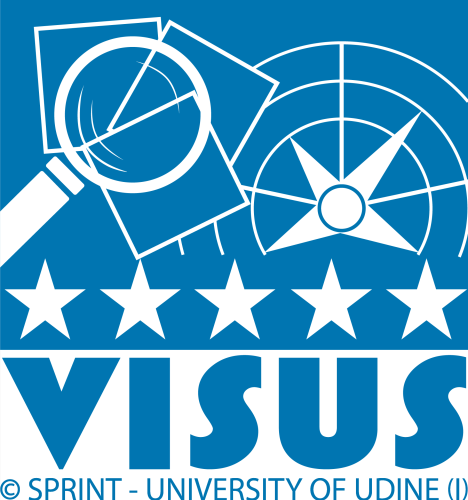
Visual Inspection for defining Safety Upgrading Strategies (VISUS)

Visual Inspection for defining Safety Upgrading Strategies (VISUS)
Purpose
Ensuring the safety of people in case of natural hazards is one of the main concerns of public administrators in hazard-prone territories, particularly with reference to strategic and relevant major public buildings, such as schools. This requires the definition of a rational and effective strategy for risk reduction based on the level of risk, criticalities, countermeasures, and costs.
With the support of the United Nations Educational, Scientific, and Cultural Organization (UNESCO), the researchers of the SPRINT-Lab – University of Udine (Italy) developed a specific technical-triage methodology named VISUS (Visual Inspections for defining Safety Upgrading Strategies). The purpose of VISUS is to define a decision-making support tool aimed at planning strategies for the multi-hazard risk reduction of learning facilities. VISUS methodology permits the assessment of the safety of school facilities at regional scale, with the purpose of supporting the definition of pragmatic safety upgrading strategies.
VISUS helps decision-makers from the Ministries of Education, National Disaster Management Authorities, and other relevant institutions to understand which schools need priority interventions, which interventions are required and how much they would cost, and which upgrade actions are possible based on available resources. Five issues are investigated:
- Site conditions
- Structural performance
- Local structural criticalities
- Non-structural components
- Functional aspects.
Data are collected using a mobile application and results are provided using graphical indicators. Collective and individual reports for each assessed school are delivered as outputs to aid decision-makers in defining strategies for intervention.

Approach
A bottom-up approach with the engagement of stakeholders from national and local authorities is used for the implementation of VISUS in each country to ensure that local needs are addressed. The programme aims to build capacity in each recipient country by training professors and students from the civil engineering departments of local universities on how to perform the assessments using the methodology. National workshops are organised in each country and training for decision-makers, trainers, and surveyors is provided. VISUS is adaptable to different local contexts and needs.

Implementation phases
- Establishment and organisation for project management
- Adaptation to the country/region realities (Hazard Profile and Typologies)
- Training for building national and local capacities for critical infrastructure assessment
- Execution of school surveys
- Elaboration of data and creation of reports
- Planning for intervention
Beneficiaries
- Students, teachers, school managers, and personnel of assessed schools
- Responsible national, sub-national and local authorities
- Students and professors from local partner universities
Deliverables
- Capacitates for technical assessment created in the country
- Individual School Report
- Collective Report (including budget estimations)
- Geo-referenced national inventories of schools in mapping platforms
- Searchable database

Audience
The VISUS methodology is designed for:
- Education sector assets management and facilities planners
- Education sector management: national, sub-national, local levels
- Local school community
- Partners in school safety
Implementation – Pilot projects
The methodology has been successfully implemented in the following countries:
- 2009 – Italy: seismic assessment of about 1000 schools, in the North-East
- 2013 – El Salvador: seismic assessment of 100 schools, in San Salvador
- 2015 – Lao PDR: multi-hazard assessment of 10 schools
- 2015 – 2016 – Indonesia: multi-hazard assessment of 160 schools, in Bandung, Pangadaran, and Ambon areas and in the Central Molucca District
- 2016 – Peru: multi-hazard assessment of 100 schools, in Lima City and surrounding areas
- 2017 – Haiti: multi-hazard assessment of 100 schools, in the Northern part of the Country
- 2018 – Mozambique: multi-hazard assessment of 100 schools, in the Maputo region
- 2021 – Zimbabwe: multi-hazard assessment of 15 schools, in Chimanimani and Chipinge Districts
The up-to-date list of VISUS projects is available at the website of the “UNESCO Chair in Intersectoral Safety for Disaster Risk Reduction and Resilience – SPRINT-Lab, University of Udine”
Resources and further reading
- UNESCO guidelines for assessing learning facilities in the context of disaster risk reduction and climate change adaptation Volume 1: Introduction to learning facilities assessment and to the VISUS methodology
- UNESCO guidelines for assessing learning facilities in the context of disaster risk reduction and climate change adaptation Volume 2: VISUS methodology
- UNESCO guidelines for assessing learning facilities in the context of disaster risk reduction and climate change adaptation Volume 3: VISUS implementation
- Webinar: Introduction to the VISUS Methodology
- Multi-hazard visual inspection for defining safety upgrading strategies of learning facilities at territorial level: VISUS methodology
- Implementation of seismic assessment of schools in El Salvador
-
Special Issue on School Safety in the Context of Disaster Risk Reduction
Access more information about VISUS







